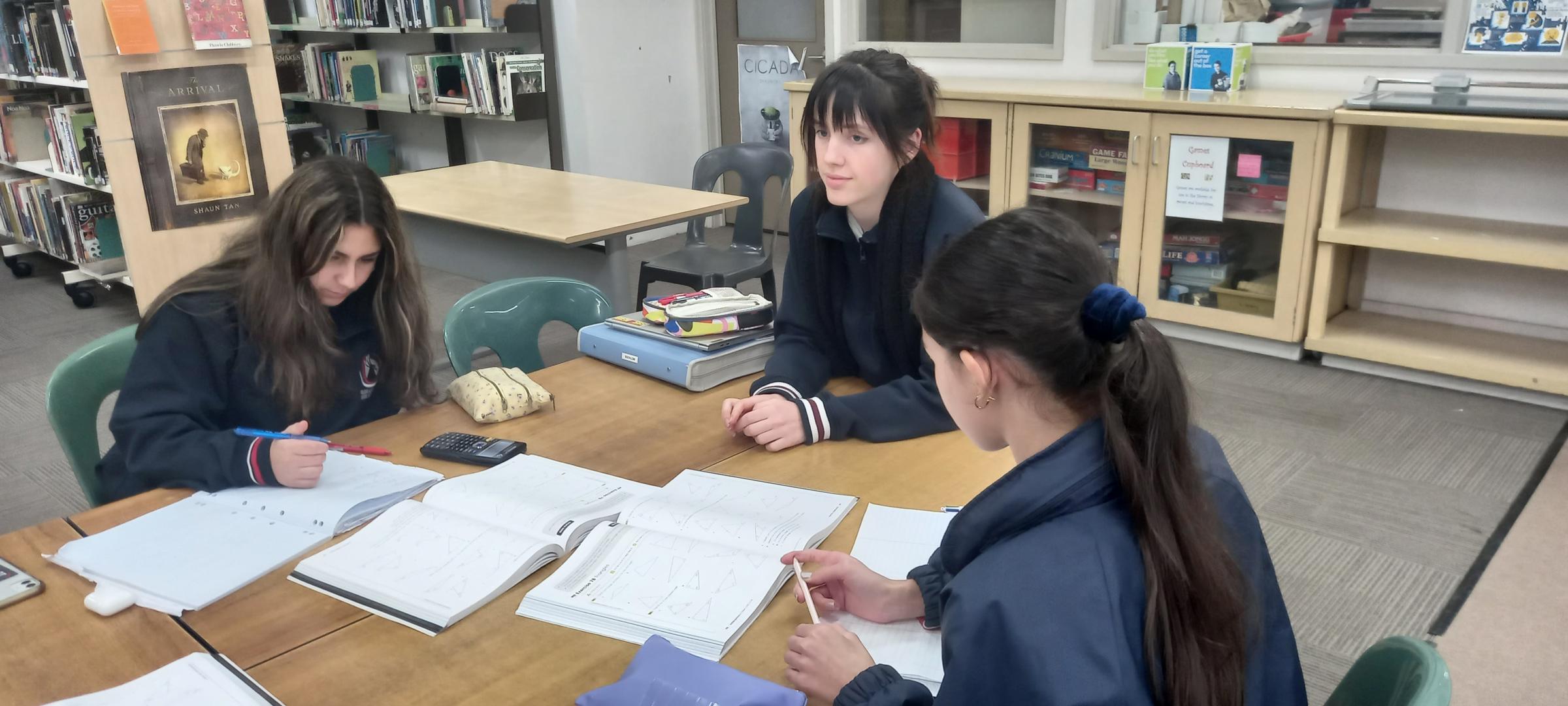Numeracy

A new year means new beginnings, fresh opportunities and a time for change. This is exactly what’s happening in the Maths faculty with the full implementation of the Victorian Maths Curriculum 2.0, the introduction of two online programs and the introduction of new textbooks.
New Maths Curriculum
What is the new Victorian Maths Curriculum 2.0?
The curriculum has undergone a significant overhaul. The most significant cahnges we will see are (1) a stronger emphasis on Computational Thinking - helping students understand how to break down problems into logical steps and solve them systematically and (2) Algorithmic Thinking - how to create and follow a sequence of instructions or rules to solve problems.
What does that mean for assessment?
Previously, students were assessed across three strands, with teachers providing a separate judgment for each: Number and Algebra, Measurement and Geometry, and Probability and Statistics. In the new curriculum, these have been expanded into six strands: Number, Algebra, Measurement, Space, Statistics, and Probability. However, instead of three separate judgments, students will now receive a single, aggregated teacher judgment for Mathematics on their end of semester reports.
Online Programs
Online Programs in Year 7 through 9
We have introduced the online program Squizya at Years 7 through 9. This is the same as the previously used Maths Mate workbook, however it is online. The Maths Mate program allows students to effectively improve their mathematical skills through cyclic revision. We chose to move this program online as it provides teachers with the opportunity to differentiate and assign worksheets at the student’s achievement level. It is automatically marked providing students with instant feedback. Allows the student, parents/guardians and teacher to track progress. This means that teachers now also have the opportunity to assign skill builders that target the students individualised needs. This has started being used in Year 8 with success and will begin next week in Years 7 and 9 once students have finished NAPLAN testing.
Online program utilised in VCE Maths
We have chosen to utilise Edrolo to support students in VCE Mathematics. Edrolo is an interactive online learning platform designed to complement classroom teaching by providing high-quality video lessons, step-by-step worked examples, practice tests and progress tests with worked solutions, summary sheets and exam-style questions. It allows students to revisit challenging concepts and reinforce their understanding through guided practice. By integrating Edrolo into our Maths program, we aim to enhance student learning and support their success in VCE Mathematics.
Numeracy vs Mathematics
What is the difference between Maths and Numeracy?
Mathematics is the study of numbers, patterns, problem-solving and more covering topics like algebra, geometry, and statistics. Numeracy, on the other hand, is the ability to apply these mathematical skills in everyday life. For example, managing money, reading timetables, or measuring ingredients. While mathematics builds knowledge, numeracy is about applying that knowledge to real world situations.
This is the second year of the new VCE Vocational Major (VM). One of the subjects that students undertake in this course is Numeracy. In this subject, students learn the required mathematical skills to apply to real world scenarios. The year 11 students are currently working on applying their mathematical knowledge to building their own business of choice and the year 12 students are applying their mathematical knowledge to creating a 10 year financial plan that is specific to their life.
Leanne Zammit
Numeracy Learning Specialist
